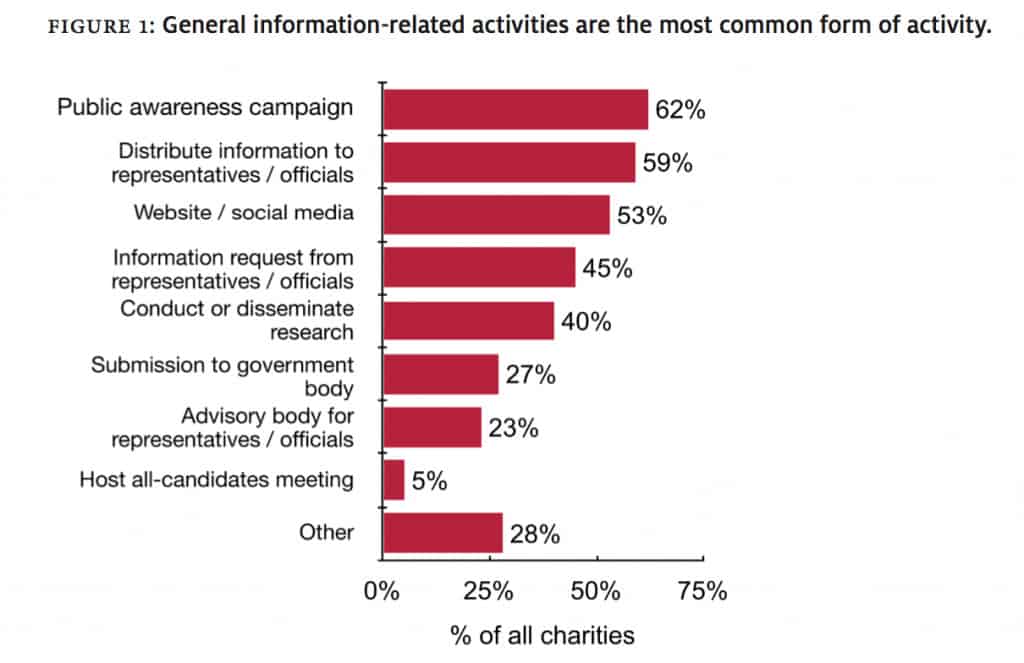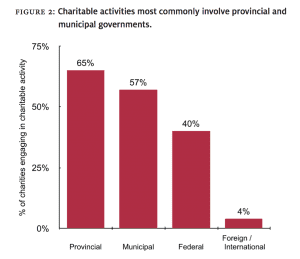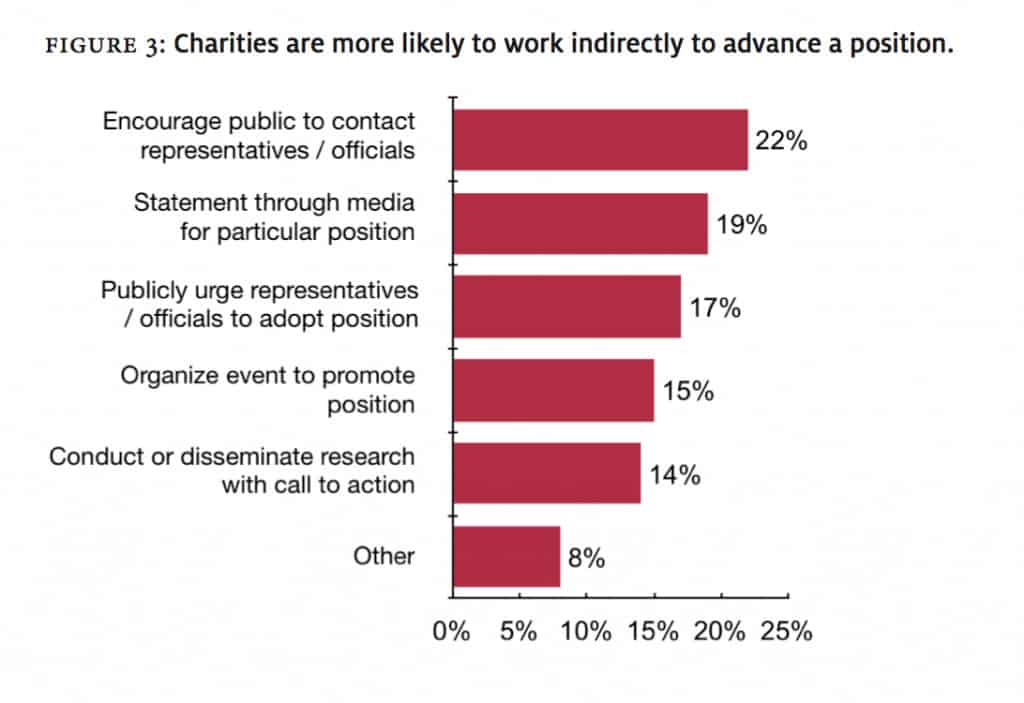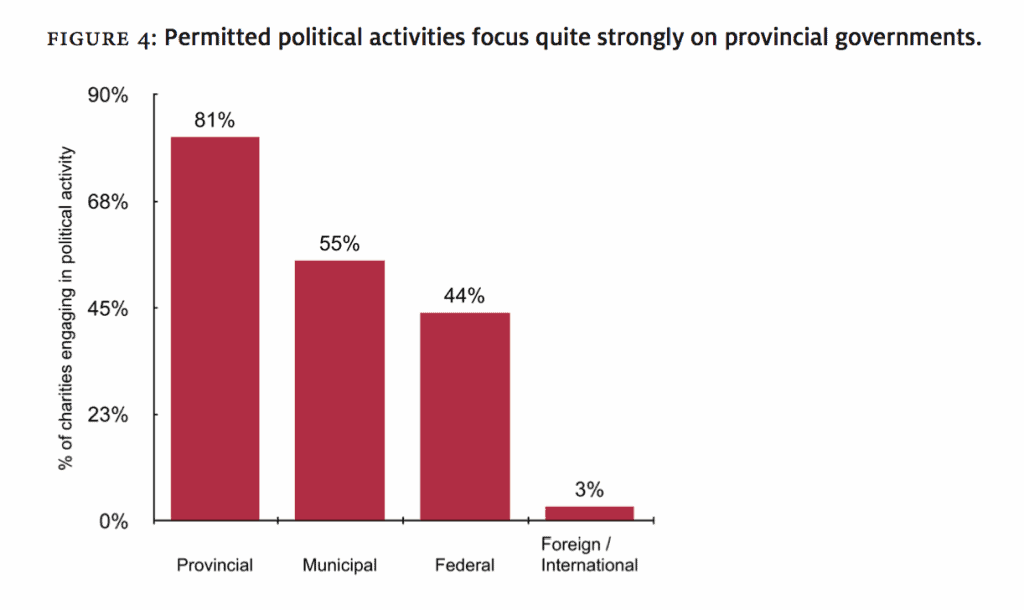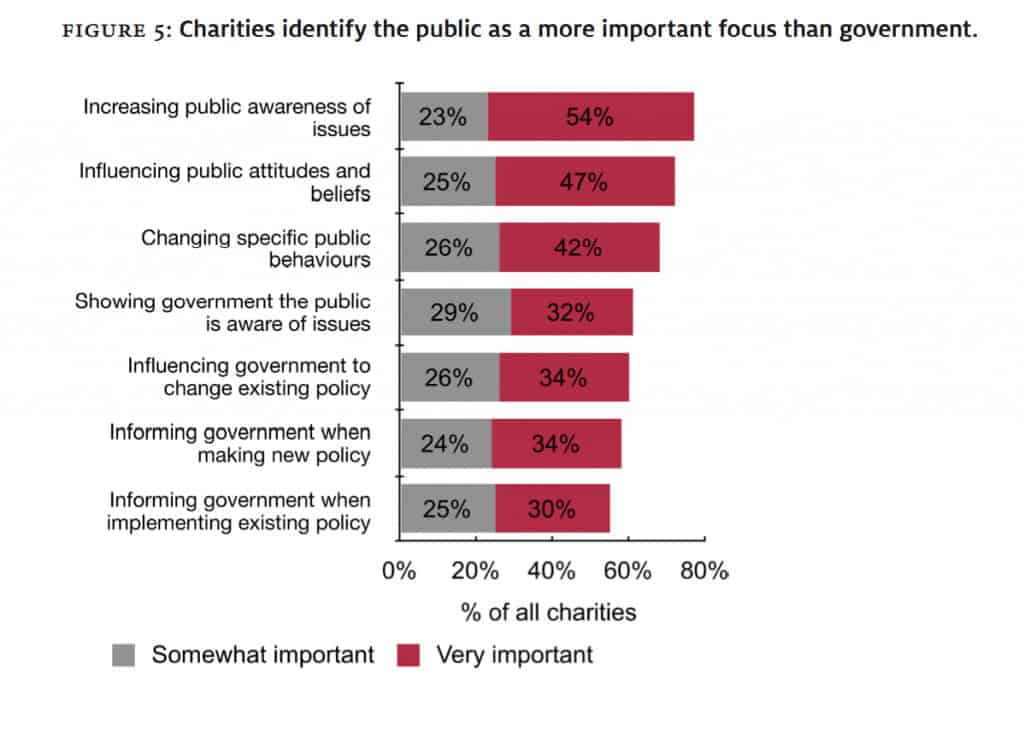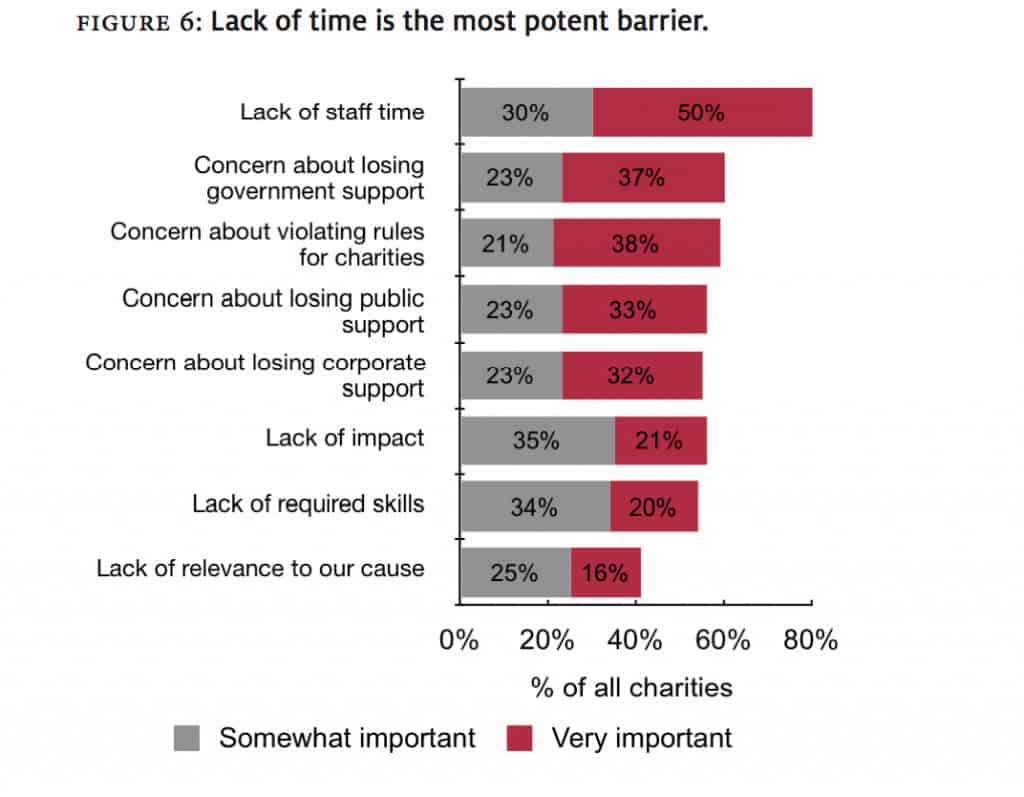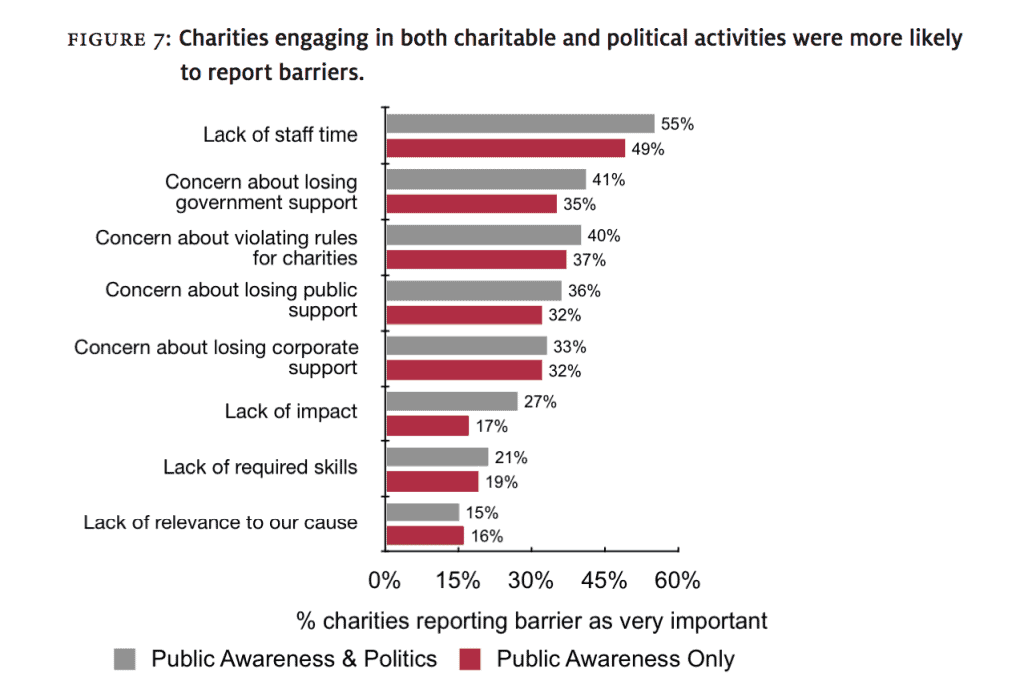Introduction
The third and most recent edition of Imagine Canada’s Sector Monitor (www.imaginecanada.ca/sector_monitor) was conducted between October 28 and November 24, 2010.1 A major focus of this survey was exploring the public awareness and policy activities of Canadian charities.
Because this topic can be somewhat sensitive among charities, the survey instrument used a framework that hewed fairly closely to Canada Revenue Agency (CRA) guidance regarding political activities. According to the guidance, allowable activities fall into two general categories, very broadly defined as follows:
• Activities are considered charitable when they are well reasoned and aim to increase awareness of an issue related to the charity’s purpose, but do not include a call to political action. While public awareness campaigns cannot be the charity’s primary activity, charities are allowed to devote significant organizational resources to charitable public awareness and policy activities.
• Political activities seek to pressure the government on an issue related to the charity’s purpose. Activities are permitted if they are non-partisan and if the charity devotes substantially all of its resources to other, charitable, activities.
Activities that fall outside the boundaries of these categories (e.g., partisan political activities, activities not related to the charity’s purpose, etc.) are generally not permitted.2
Survey findings
The survey findings indicate that most charities engage in public awareness and policy activities that would be considered charitable by CRA. A significant minority (just over a third) engage in specifically political activities.
Charitable activities
The vast majority of charities surveyed (86%) reported engaging in some sort of charitable public awareness and policy activity over the previous year. Organizations were roughly equally likely to seek to increase awareness among the public (62%) and to provide information to policymakers or public officials (59%; see Figure 1). Just under half (45%) reported responding to an information request from elected representatives or public officials. Somewhat fewer reported making a submission to a government-related body (27%) or serving on an advisory body (23%).
figure 1: General information-related activities are the most common form of activity.
Most charities that carried out these activities did so irregularly (35%) or only a few times a year (20%)—just 14% did them a few times a week or more. These activities most commonly involved provincial governments (65%; see Figure 2), followed by municipal governments (57%), and the federal government (40%).
figure 2: Charitable activities most commonly involve provincial and municipal governments.
Permitted political activities
Just over a third (37%) of charities reported engaging in some form of permitted political activity over the previous year. In terms of specific activities, charities were most likely to encourage the public to contact elected representatives or government officials (22%) or to make a statement to the media (19%; see Figure 3). Although many organizations (40%; see Figure 1) made use of research in their public awareness and policy activities, they were much less likely to do so in the context of political activities (14%).
figure 3: Charities are more likely to work indirectly to advance a position.
As with charitable awareness and policy activities, most organizations that reported engaging in political activities did so irregularly (40%) or a few times a year (37%). Just 6% engaged in political activities a few times a week or more. Political activities were most likely to focus on influencing provincial governments (81%; see Figure 4).
figure 4: Permitted political activities focus quite strongly on provincial governments.
Perceived importance of public awareness and policy activities
Regardless of whether their organization engaged in public awareness and policy activity, respondents were asked how important various objectives for these activities are to their respective causes. Charities were most likely to consider increasing public awareness and influencing public attitudes and beliefs very important to their cause (see Figure 5). They were slightly less likely to view changing specific public behaviours as very important, but noticeably less likely to consider informing or influencing government to be very important to their cause (see Figure 5). Not surprisingly, the largest organizations (those with annual revenues of $5 million or more) were more likely than smaller organizations to view influencing government as being very important.
figure 5: Charities identify the public as a more important focus than government.
Barriers
Respondents were also asked about potential barriers to public awareness and policy activities. By far the most commonly reported barrier was lack of staff time, with half of organizations reporting it as a very important barrier (see Figure 6). Concerns about potential loss of support from various audiences and potential violations of the rules for charities were also fairly potent barriers. Lack of impact or required skills appeared to be somewhat less acutely felt as barriers. Only a minority of charities cited lack of relevance to their cause as a barrier.
figure 6: Lack of time is the most potent barrier.
Charities that engaged in both public awareness and permitted political activities were more likely to report almost all barriers than were organizations that focused exclusively on public awareness (see Figure 7). They appeared to be under more time-related stress, as well as more concerned about losing support from various audiences. Interestingly, they were also noticeably more likely to be concerned about lack of impact. This, along with the higher importance assigned to affecting the public’s awareness and attitudes, suggests that charities believe that the public may be a more fertile audience for their messages than are governments.
figure 7: Charities engaging in both charitable and political activities were more likely to report barriers.
Conclusion
These findings show that a large majority of Canadian charities engage in a broadly defined set of public awareness and policy activities. Most of the focus is on activities that would be considered charitable under CRA guidelines, but a significant minority of organizations engages in specifically political activities. Generally speaking, charities tend to place more importance on influencing the public than they do on influencing government. When government is an audience, provincial and municipal governments tend to be viewed as most important. By far the most important obstacle to public awareness and policy activities is lack of time. Concerns about impact are significant among organizations engaging in specifically political activities.
Notes
1. 3,816 charity leaders were surveyed and 1,625 complete responses were received, for a response rate of 42%. Responses have been weighted by organization size, region, and sub-sector to produce more accurate national estimates.
2. This treatment of the guidance is significantly simplified. Readers are urged to consult the guidance directly for more information.
David Lasby is Director, Research, Imagine Canada. Email: dlasby@imaginecanada.ca
Lindsey Vodarek is Manager, Communications & Public Policy, Imagine Canada. Email: lvodarek@imaginecanada.ca
